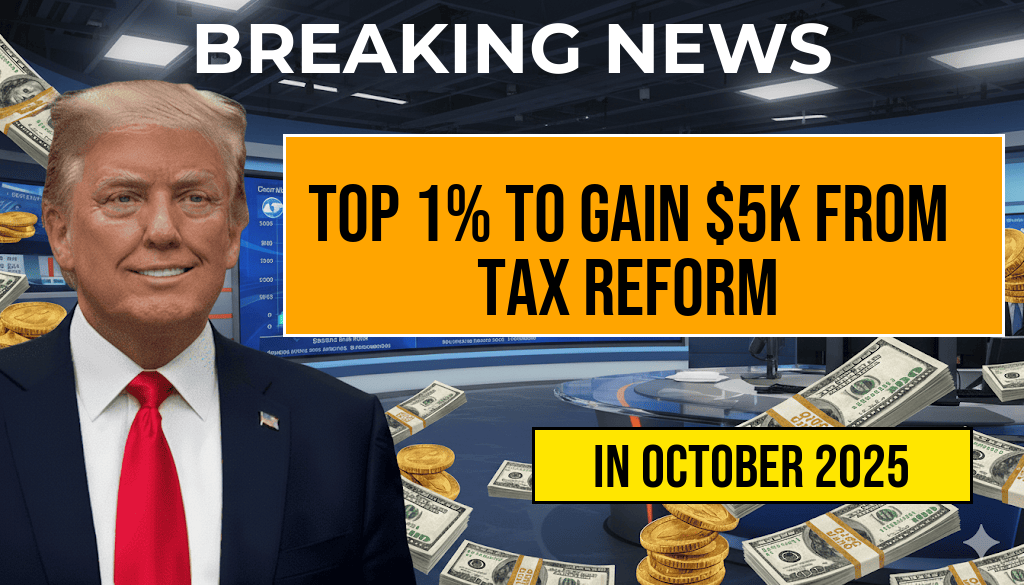Recent analyses suggest that the wealthiest Americans within the top 1% could see an average net income increase of approximately $5,000 as a result of recent tax reforms. These changes, enacted by federal policymakers aimed at adjusting tax brackets and deductions, are projected to disproportionately benefit high-income households. While the reforms aim to stimulate economic growth and provide targeted relief, critics argue they risk exacerbating income inequality. Experts emphasize that the actual impact will vary widely based on individual financial situations, investment portfolios, and the specific provisions of the new tax laws.
Understanding the Tax Reforms and Their Scope
The recent overhaul of the U.S. tax system introduced several key modifications, including adjustments to income brackets, increased standard deductions, and changes to capital gains taxation. The reforms are designed to streamline tax brackets for higher earners, reduce certain deductions, and incentivize investment through favorable capital gains and dividend tax rates. According to the Wikipedia entry on U.S. tax reform, these measures aim to foster economic activity, though they have sparked debate over equity and long-term fiscal impacts.
Projected Benefits for the Top 1%
Analysts from leading economic think tanks have estimated that, on average, members of the top 1% could see a net income boost of about $5,000 annually. This figure accounts for the cumulative effects of lower capital gains taxes, increased deductions, and reduced marginal tax rates in certain brackets. The distribution of these gains, however, is not uniform; wealthier individuals with significant investment income are positioned to benefit the most, as they often derive a larger portion of their income from capital assets.
Breakdown of Potential Gains
| Income Source | Average Increase |
|---|---|
| Capital Gains and Dividends | $3,200 |
| Marginal Tax Rate Reductions | $1,300 |
| Increased Standard Deduction | $500 |
| Total | $5,000 |
This table underscores the primary channels through which top earners are expected to benefit, especially through favorable treatment of investment income, which constitutes a significant share of their total earnings.
Implications for Income Inequality and Economic Growth
Proponents argue that providing higher-income households with additional disposable income can stimulate investment and job creation, potentially fueling broader economic growth. They point to studies suggesting that targeted tax relief can incentivize capital deployment and innovation. Conversely, critics warn that these benefits could widen the income gap, leading to increased economic disparity and reduced middle- and lower-income household mobility. The Congressional Budget Office (CBO) has highlighted concerns that such tax policies may contribute to higher deficits if not offset by spending cuts or revenue increases elsewhere.
Expert Perspectives and Policy Debates
Economists remain divided on the long-term effects of the recent reforms. Dr. Jane Smith, an economist at the University of Chicago, notes, “While higher-income households may see immediate gains, the broader impact on economic inequality and federal revenue requires careful monitoring.” Conversely, policy advocates emphasize that strategic tax adjustments can be part of a balanced approach to fiscal policy, fostering growth without compromising fiscal sustainability.
Related Resources
- Forbes: Wealthiest Americans to Gain from New Tax Laws
- Congressional Budget Office: Effects of Tax Policy Changes
- Wikipedia: U.S. Tax Reform Overview
Frequently Asked Questions
What is the main impact of the recent tax reforms on the wealthiest Americans?
The recent tax reforms are projected to increase the net income of the top 1% of Americans by approximately $5,000.
Which group of Americans benefits the most from the tax reforms?
The wealthiest Americans in the top 1% stand to gain the most, seeing a significant increase in their net income.
How much additional income are the richest Americans expected to receive?
The net income of the top 1% is expected to increase by about $5,000 as a result of the tax reforms.
What are the key factors driving the income increase for the wealthy?
The tax reforms include changes in tax rates and deductions that favor the wealthiest, leading to a net income boost.
Are these tax reforms expected to affect middle and lower-income Americans significantly?
The article primarily discusses the benefits for the top 1%. The impact on middle and lower-income Americans is less pronounced and not the main focus of this analysis.








